What Is a PBN?
A private blog network (PBN) is a group of websites that only exists to provide backlinks to another website and improve its Google search rankings. The idea is to artificially boost the perceived authority of the website in the eyes of search engines.
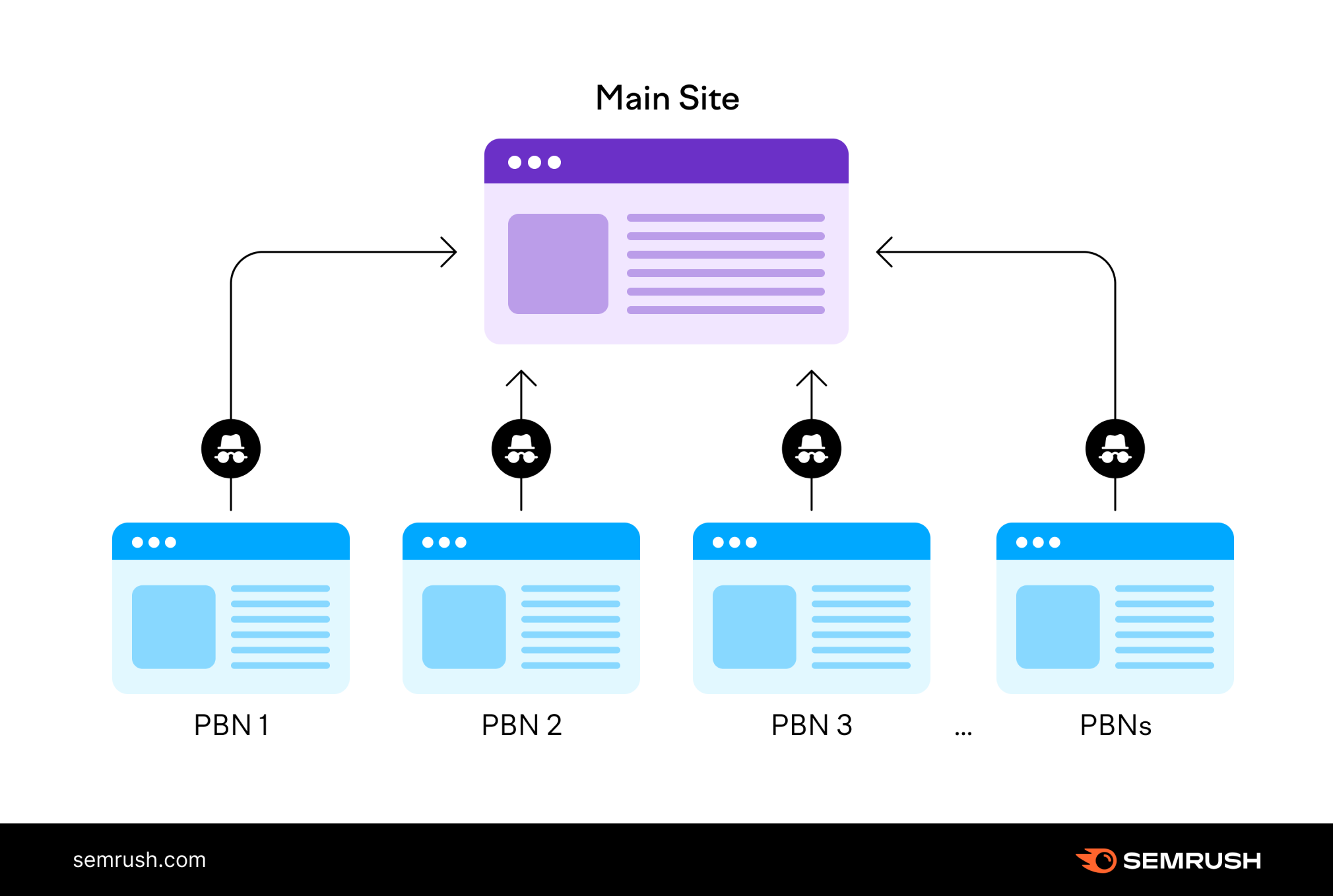
SEOs create PBNs by building new websites or buying old domains that are already authoritative.
And then linking from those domains to the website(s) that they want to boost.
People who use PBNs typically use this tactic to be in "full control" of their link building efforts.
Think about it this way:
Rather than earning links, a private blog network means you can point links to your site at will, with the exact anchor text you want, whenever you want. And to whichever page needs boosting.
Sounds great, right?
Wrong.
Using PBNs for SEO clearly violate Google's Webmaster Quality Guidelines and can result in harsh penalties.
But people still use them and talk about them. Why?
Let’s get into it.
PBNs Violate Google's Webmaster Quality Guidelines
We recommend that you avoid using PBNs altogether as a link building tactic.
Google’s link spam guidelines state:
“Any links that are intended to manipulate rankings in Google Search results may be considered link spam. This includes any behavior that manipulates links to your site or outgoing links from your site.”
Private blog networks clearly fall within this guidance.
Links from PBNs try to manipulate Google search results. These links aren't earned. They’re placed by someone acting on behalf of your site.
PBN websites don’t offer any real value. They’re just designed to “beat the system.”
The best way to earn high-quality, relevant links is to create unique, valuable content.
And creating good content pays off. People will naturally want to link to useful content.
Plus, most people’s real websites are likely more authoritative than spammy PBN sites.
PBN links aren't editorially placed links as the result of great content.
They’re a way to impact search rankings artificially. And it's not something that’ll work in the long term.
To check if a particular website has backlinks from PBNs, use Semrush’s Backlink Analytics tool.
Open the tool, enter the website URL, and click “Analyze.”

Then, go to the “Network Graph” tab. You’ll see a color-coded graph depicting a backlink network.
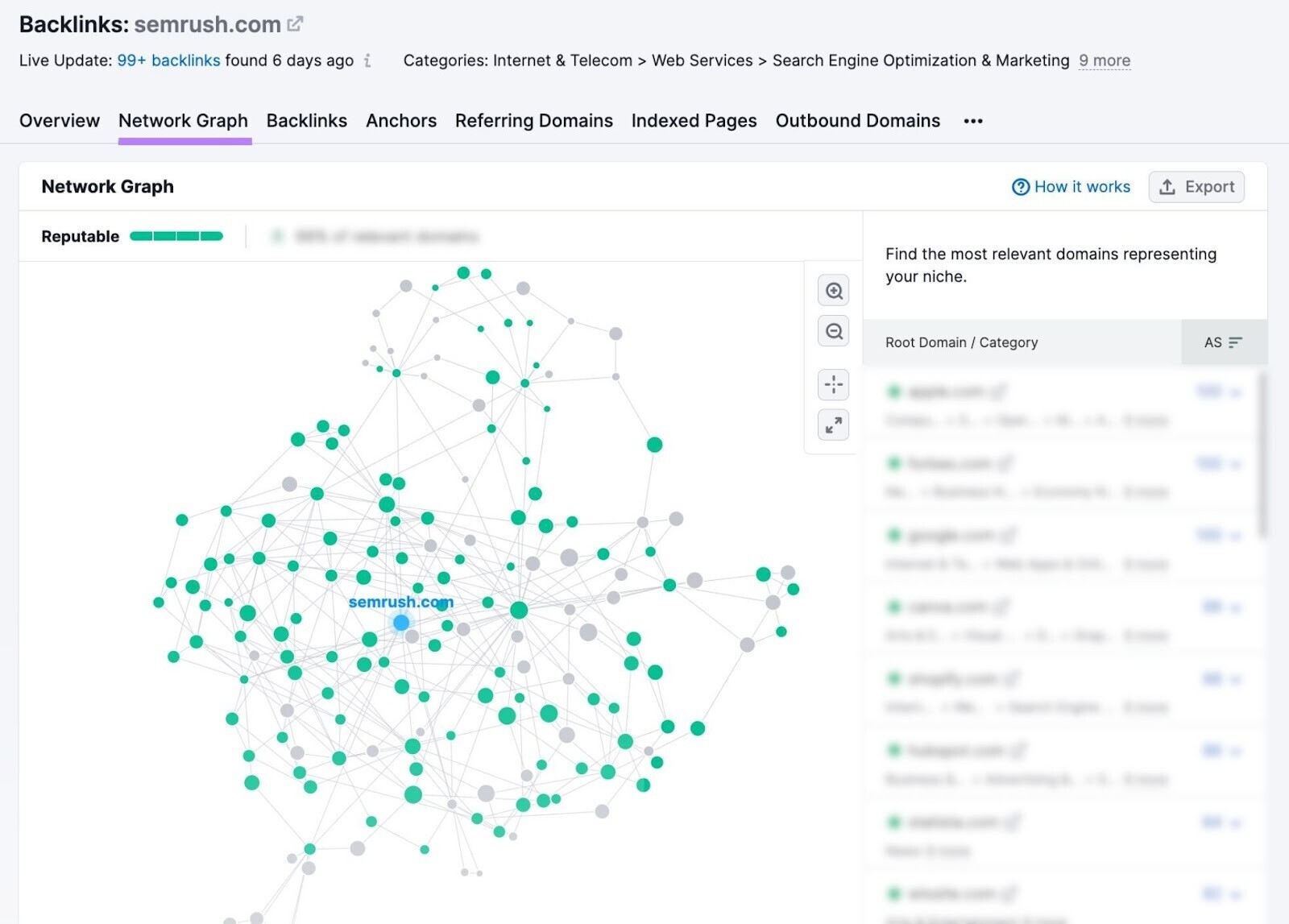
If you see red dots in the network, that means the website is using PBNs and violating Google’s guidelines.
The Risks Associated with Private Blog Networks
So, if PBN links violate Google's guidelines, what are the risks?
We can break these down into two key scenarios:
1. Your Site Is Penalized/Loses Rankings
When manipulative link building tactics are excessive, your site may be penalized and hit with a manual action.
And if that happens, your pages (or entire site) can be ranked lower or even completely omitted from search results.
If your site is affected, Google will notify you in the "Manual Actions" report in Google Search Console.
Like this:
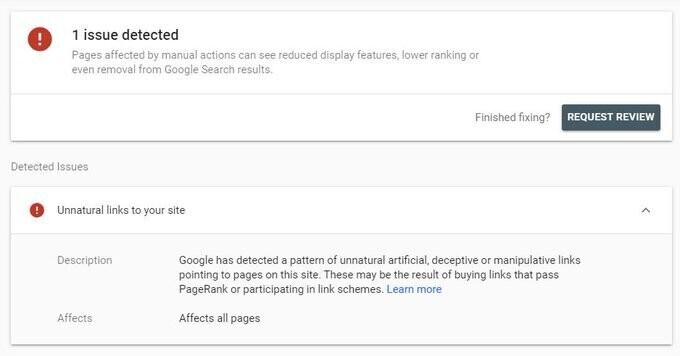
(Source: Barry Schwartz’s post on X, formerly Twitter)
To recover from a manual action, you'll need to fix the issue (remove links or submit a disavow file) and file a reconsideration request.
Even if the reconsideration is successful, your page may not return to its original rankings. Your best bet is to create helpful, relevant content in an attempt to achieve better rankings.
Pro tip: Only disavow pages if you have received an “unnatural link” manual action. Or if you know that you have unnatural links and want to get ahead of the notification. Disavowing pages affect rankings, so always follow Google’s guidelines and proceed with extreme caution.
2. The Links Are Ignored
If Google’s algorithm deems a backlink unnatural, it can also completely ignore it. Which means the link won’t have an impact on your rankings. Positively or negatively.
Google's John Mueller has previously confirmed that Google ignores links that are unlikely to be natural.
And let's not forget that Google now has the data from large numbers of disavow files. For many years, SEOs have been helping the search engine better understand the sources of unnatural links.
We already ignore links from sites like that, where there are unlikely to be natural links. No need to disavow :)
— John Mueller is mostly not here 🐀 (@JohnMu) December 2, 2019
If links aren’t impacting rankings at all, resources allocated to building these (time and/or money) are effectively wasted.
No one wants to see their efforts go to waste.
Why Would Someone Use a Private Blog Network?
Given the associated risks, you're probably wondering why some SEOs still use private blog networks to get backlinks.
Mainly for two reasons:
1. Earning Links Is Difficult and Unpredictable
Earning quality backlinks takes time. And results aren't guaranteed.
The link building tactics that result in quality and authoritative links are typically:
- Email outreach
- Digital PR
- Broken link building
- Link reclamation
- Resource link building
- Etc.
These tactics have one thing in common:
They involve reaching out to relevant journalists, bloggers, or website owners and trying to convince them to link to your content.
These techniques are all about raising awareness of a piece of content. And hoping the recipient likes it enough to link to it.
But this means the results are unpredictable.
Even the best efforts can't guarantee to return a set number of links per month or quarter.
Using a PBN, on the other hand, can appear to provide more control and less uncertainty. But again, we recommend avoiding it in favor of earning quality backlinks.
2. A Desire to Control and Manipulate Anchor Text
Anchor text is the text in a hyperlink—usually underlined—that leads to another page when clicked.
And relevant, descriptive anchor text can help Google understand the context of a page. And possibly help improve its ranking.
Which is why some folks turn to PBNs. Many PBN owners will allow you to choose the anchor text you want for each backlink.
If you earn links editorially, you'll find journalists and webmasters will sometimes use anchor text like:
- “Click here”
- An article's title
- A naked URL
- A business name
And SEOs, understandably, would prefer keyword-rich anchor text.
They want backlinks with keyword-rich anchor text that provides Google with context about the page. Which is almost impossible to control through outreach.
Debunking Myths Around PBNs
Despite the risks associated with PBNs, there's still a lot of confusion in the SEO community.
Below, we bust four common PBN myths.
Myth 1: Private Blog Network Links Won't Help You Rank
While links from a private blog network violate Google's guidelines, they can still help you rank.
There’s a good chance they’ll boost your site's rankings. But the increase is likely only temporary.
Building links using a PBN is risky. And in the worst-case scenario, your rankings will plummet once Google discovers them.
If the algorithm (or a manual reviewer) detects unnatural activity, you'll likely see a steep decline in your site's visibility on Google’s SERPs.
Myth 2: Google Can Easily Identify Private Blog Networks
Google can identify private blog networks in several ways. They mainly look for footprints across sites that may signal a group of sites meant solely for link generation.
The footprints they look for include:
- Shared IP addresses
- Same web hosting provider
- Domains purchased from auction sites
- Blocking third-party link analysis tools
- Etc.
But SEOs building private blog networks know how Google typically spots PBNs. And work to prevent (or eliminate) these footprints as much as possible.
But that’s beside the point.
Google is getting increasingly better at identifying low-quality links. Regardless of where they come from. PBN or not.
And Google will completely ignore these types of backlinks.
So, even if the PBN doesn’t get penalized, those links won’t count. That’s a lot of time and money down the drain.
It’s not worth the risk. Low-quality link schemes rarely stand the test of time.
Myth 3: All Paid Links Come From Private Blog Networks
Paid links can certainly come from private blog networks.
We work in a world where many bloggers openly sell links or sponsored posts. But is every site that sells a link or sponsored post part of a PBN?
Absolutely not.
That being said, paying for links is almost always going to be against Google’s official guidelines.
Whether they come from a PBN or not.
Myth 4: All Groups of Sites That Link to Each Other Are PBNs
It's not uncommon for a business to own more than one website and link those sites to one another.
These links aren't, for the most part, unnatural. And they don't necessarily form a PBN.
Many companies run more than one website, and it's only natural to want to ensure that visitors to any of the sites discover the other related sites.
Links to these other websites are often placed in a website’s footer.
In general, there's no need to be concerned about this. Or any need to stop linking between your properties.
As long as it's natural and not done in a manipulative way.
A group of sites only becomes a private blog network when the primary objective is to build links to manipulate search results.
What Should You Do if Your Website Has Links From PBNs?
If you believe your site has links from a PBN or other low-quality sources, it's good practice to find them and take action.
First, use Semrush’s Backlink Audit tool to identify suspicious links.
Start by entering your domain and creating a project.
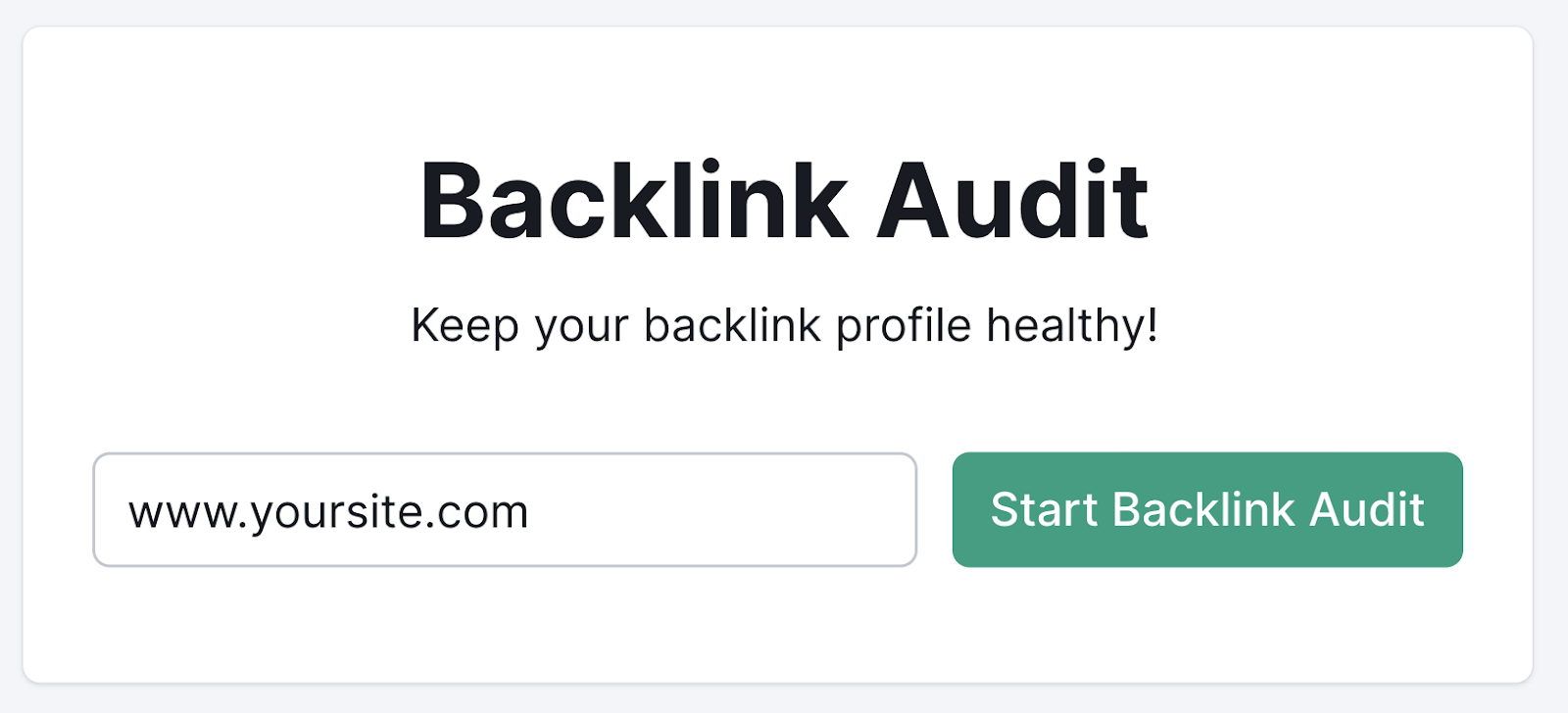
Then, head to the “Audit” tab, and you’ll see a box with potential link networks.
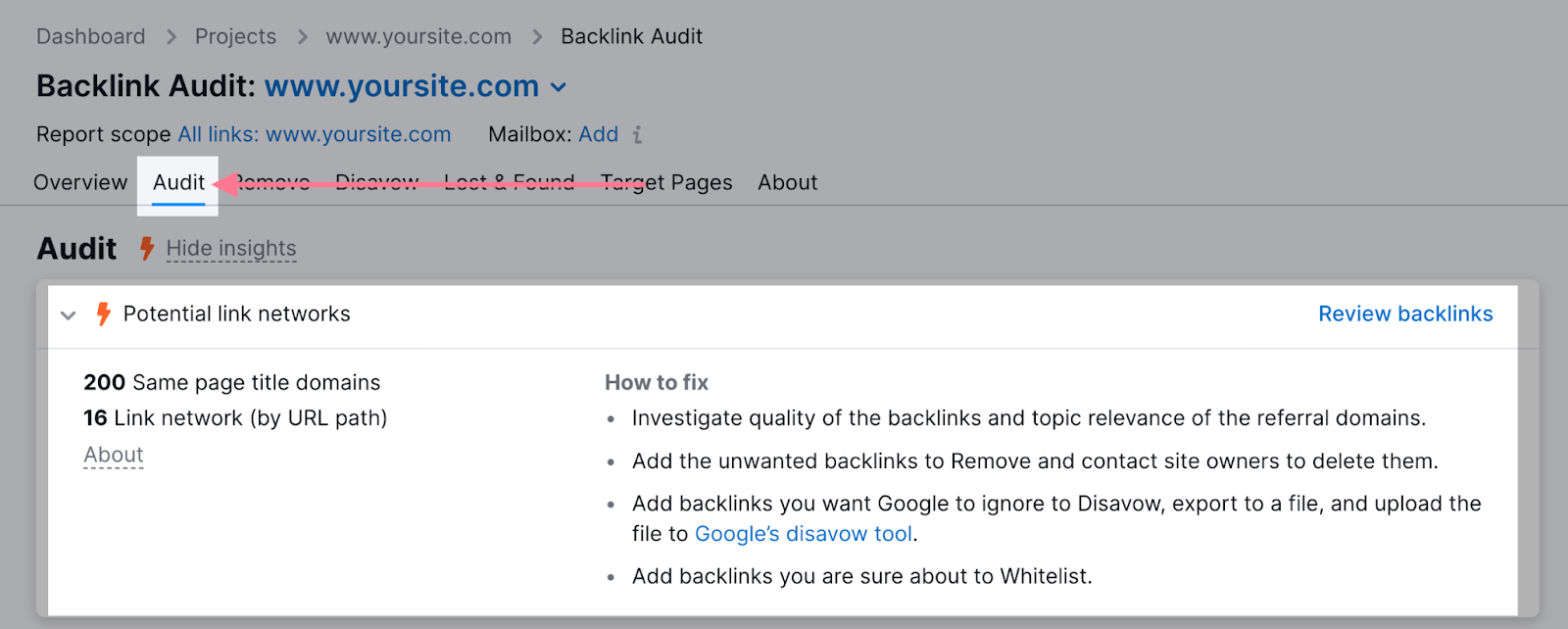
Click on “Review backlinks” to see all the potentially harmful backlinks.
These are links that can come from malicious pages, spam comments, PBNs, link directories, etc.
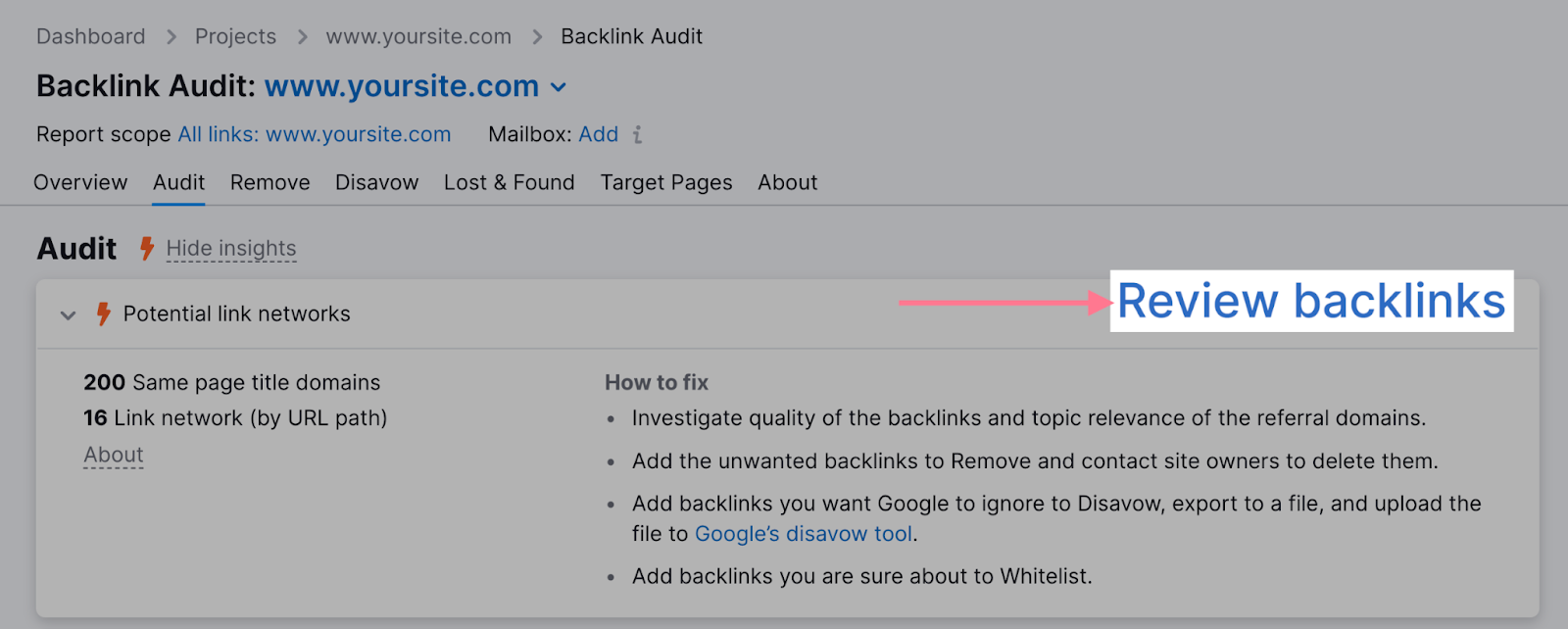
The list shows each backlink’s source URL, target URL, anchor text, authority score, and toxicity score.
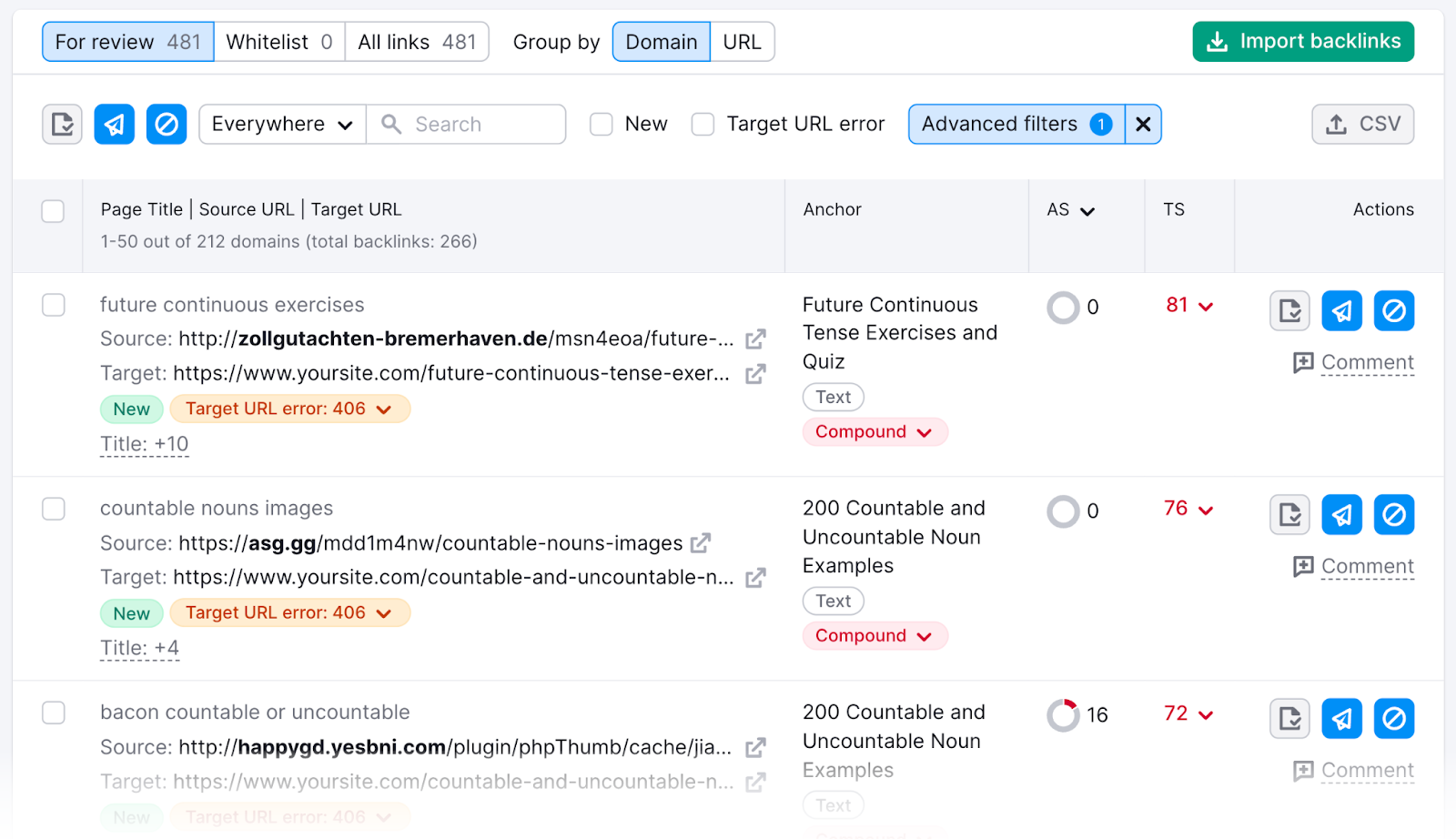
Google’s recommendation is that you simply ignore toxic links.
However, if you think a link is harming your site, you can reach out to the site owner and kindly request they take it down.
You can also disavow links. But you should be extremely careful. Doing so can be very risky to your rankings.
We only recommend disavowing if you’ve received a Google manual action against your site or think you will because you bought links.
Even then, proceed with extreme caution when disavowing any links in any context.
If you do choose to disavow, look for the backlink source in the report and click on the “no” symbol.
Like this:
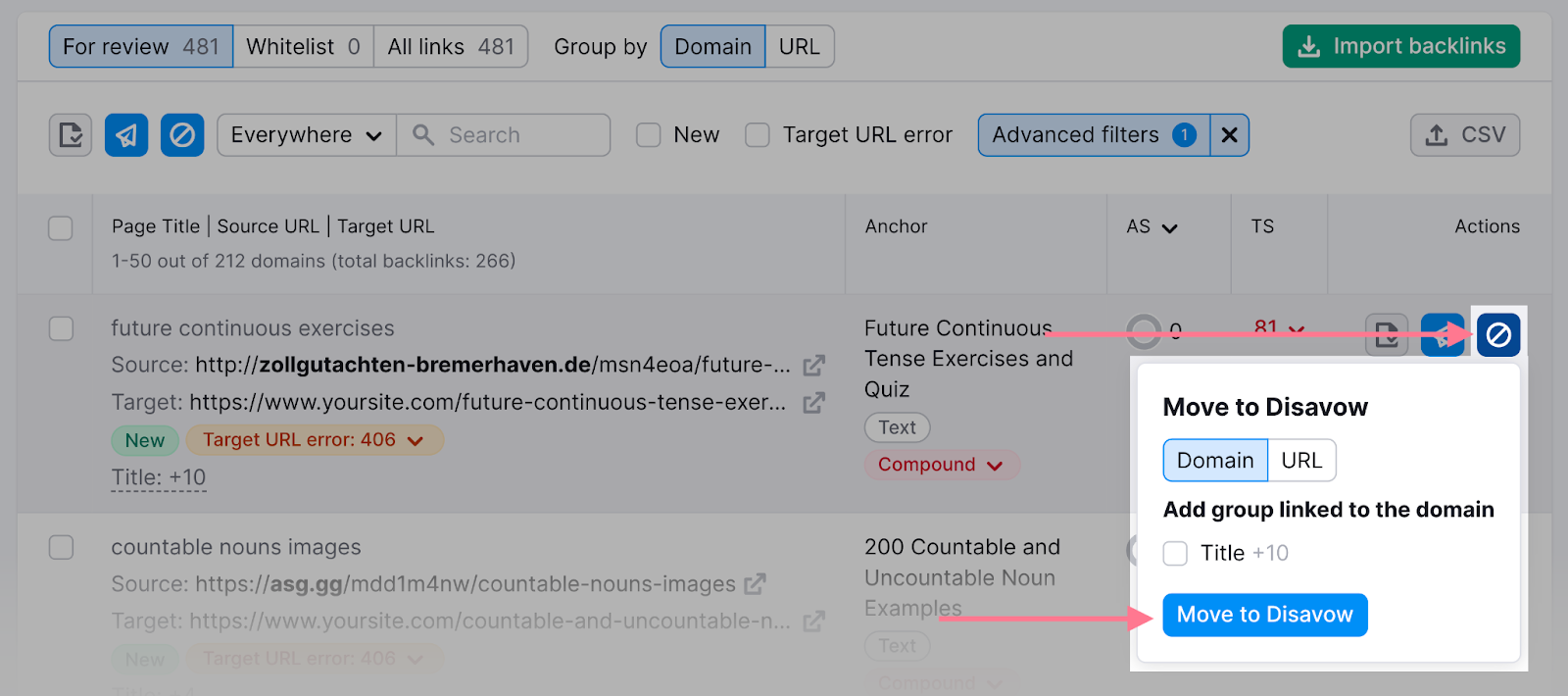
Do this for all the links you want to disavow.
The tool will compile a list, which you can then upload to Google’s disavow tool.
Again, if you disavow, please do so with extreme caution.
How to Get Links the Right Way
Using a PBN network isn’t a link building tactic we recommend or endorse. The risks aren’t worth taking.
Use aboveboard link building methods instead. Strategies like outreach, becoming a source, broken link building, and more.
It takes work. But it’s the best way to build safe, high-quality links to your website.
If you’d like to learn more, check out these resources:
